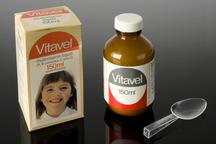

'Seajoy' motion sickness plaster, London, England, 1928-1930
- maker:
- James Evans and
- Seajoy Company Limited

Packet of "Seajoy" anti-seasickness plaster by J. Evans of London, 1928-1930, made at London; 114 Upper Richmond Road, East Putney
Motion sickness is a highly unpleasant experience that travellers wish to avoid at all costs. This plaster was intended to be applied to the pit of the stomach for the duration of the journey and promised to make “sea, train or air sickness a thing of the past”.
Each plaster cost 3 shillings. The plaster contained morphine – a highly addictive drug used for pain relief. From the letters of recommendation accompanying the packaging, the Seajoy plaster seems to have been effective, for some people at least.
Details
- Category:
- Materia Medica & Pharmacology
- Collection:
- Sir Henry Wellcome's Museum Collection
- Object Number:
- A662562
- Materials:
- plaster, gauze, protective cover and packet, paper
- type:
- plaster
- credit:
- Cardiothoracic Institute



